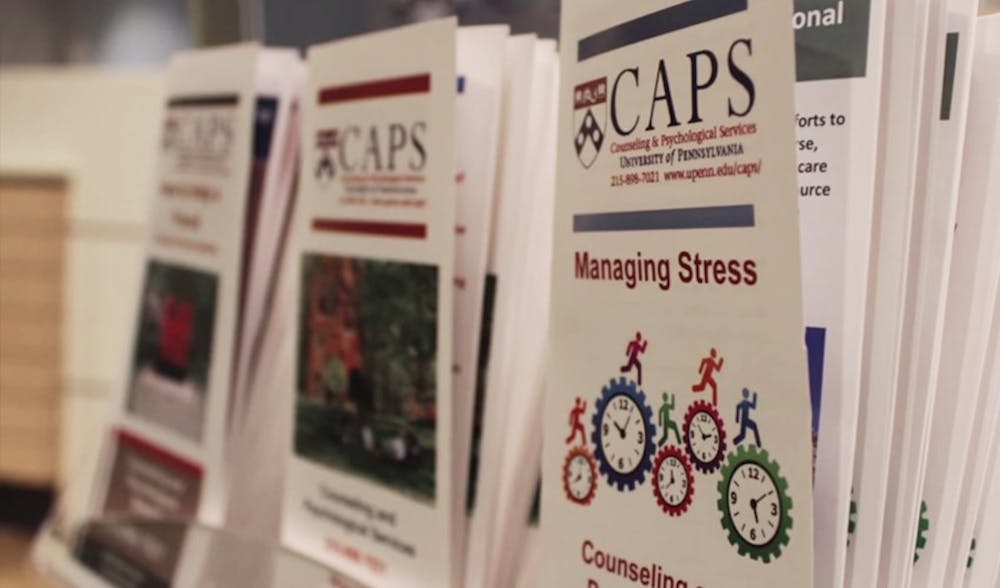Penn’s mental health task force recommendations have provoked students to question whether the administration is taking the right steps to promote mental wellness at all.
The recommendations, released on Tuesday and created in the wake of six student suicides that spanned 15 months, focused on “cultural change rather than structural change,” Co-Chair of the task force Anthony Rostain said. While some students felt the report is a step in the right direction, others felt it came to the wrong conclusions and lacked specificity.
“This idea of ‘Let’s focus on changing the culture of perfectionism and competitiveness’ is idealistic and unrealistic,” said College senior Elana Stern, a member of the Green Ribbon Campaign who met with members of the task force last spring.
The report stresses four key recommendations: making information about resources more accessible, educating and training the Penn community on mental health, increasing communication about mental health resources and optimizing the resources devoted to Counseling and Psychological Services.
After Penn’s last mental health task force — a 2002 committee created in response to 9/11 — the University did not create an oversight committee to monitor the implementation of the recommendations. Penn implemented only two-thirds of all the recommendations. Rostain, director of education for the department of psychiatry, also chaired that task force.
Plans are already in place for a cross-campus team to keep Penn on track this time with standards set by the Jed and Clinton Health Matters Campus Program, a program helping universities improve mental health and provide substance abuse resources. However, the report itself sets no firm deadlines and does not explain how it will track the implementation of its recommendations.
“The fact that the report does not include a timeline ensures no accountability on the part of the administration to make progress with any sort of urgency,” College junior Nate Stauffer said. CAPS Advisory Board representative Danielle Mohabir, a College senior, was satisfied with the report overall but also hopes to see a “timeline or concrete plan of action in the near future.”
After the 2002 report, there was no significant change in campus culture, according to former Nursing professor Margaret Controneo, a member of the 2002 task force. Though she could not immediately recall the task force’s specific recommendations, she said access to resources was a big concern. “We dealt with fairly standard mental health issues,” she said.
Stauffer, a psychology major, said the current report lacks depth. “I’m not sure what I expected, but this is incredibly disappointing. A year has passed and we seem to be back right where we started,” he said. “The most infuriating part is that virtually any student grappling with mental health problems at Penn could have told the task force all of the information in this report a year ago.”
Stauffer was also bothered by the task force’s reluctance to identify what makes Penn and Penn’s culture different from other schools, rather than what makes it similar.
Peer institutions have launched task forces in the past year, though no other task force has focused on mental health and wellness.
Penn State President Eric Barron released a letter on Tuesday to the members of Penn State’s Task Force on Sexual Assault and Sexual Harassment detailing plans for implementing the 18 recommendations it published on Jan. 29. The plans, which largely stick to a 12-month timeline, begin immediately with a search for a Title IX coordinator for the University, an entirely new position recommended by the task force.
In July, the Massachusetts Institute of Technology’s Task Force on the Future of MIT Education published an interactive website, with data and selected idea submissions, after President L. Rafael Reif charged the force with compiling a plan to bring “disruptive change” to the university’s educational instruction.
Penn State’s task force took five months to compile its report, while MIT’s took about a year and a half.
“I’ve read [Penn’s report] more than once, and the first time I read it I honestly thought that I missed something,” Stern, the Green Ribbon representative, said. She hoped to see data reflecting changing in funding, staffing and programming for mental health resources but could not find any in the report’s eight pages.
Meanwhile, some student leaders were happy to see mental health brought back into campus consciousness.
CogWell President and College senior Joanna Heinz had mixed feelings about the report. “My only issue is that I think that after one year of working on this I find that the suggestions are very preliminary,” she said. “From an administrative standpoint I think it’s great that Penn has room to grow and change.”
“I really think it is a culture change that is needed,” said Chief of Medical Emergency Response Team and College junior Sara Jones. She applauded the task force’s recommendations to focus on centralizing resources and increasing communication, which she felt could help students more easily locate MERT’s contact information for several types of crises.
Jones added that the administrators who worked on the report, including Rostain and Co-Chair Rebecca Bushnell, “really do care about students [and] really do want students to get the best care possible.”
Mohabir, too, found the task force receptive when she met with them last year. “I think they covered everything realistically possible to achieve,” she said.
Stern reflected that if circumstances were different she might have been less disappointed in the emphasis on cultural change over tangible recommendations. “In an ideal world, it could be accomplished,” she said. “But this isn’t an ideal world.”



